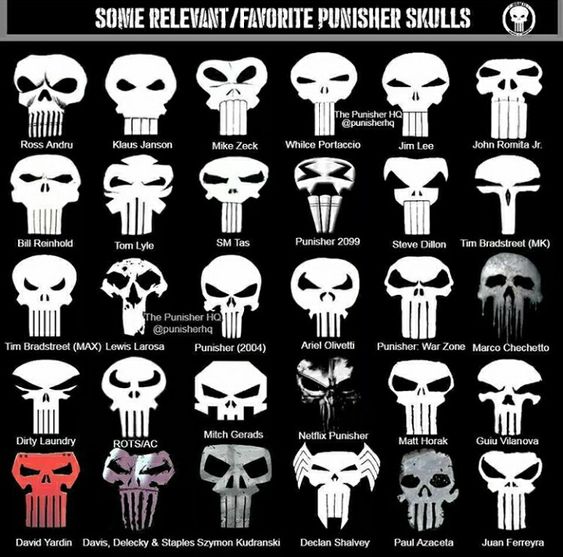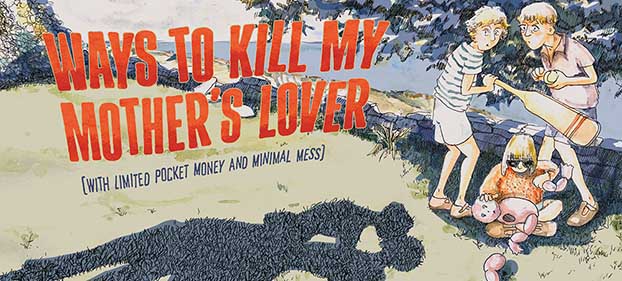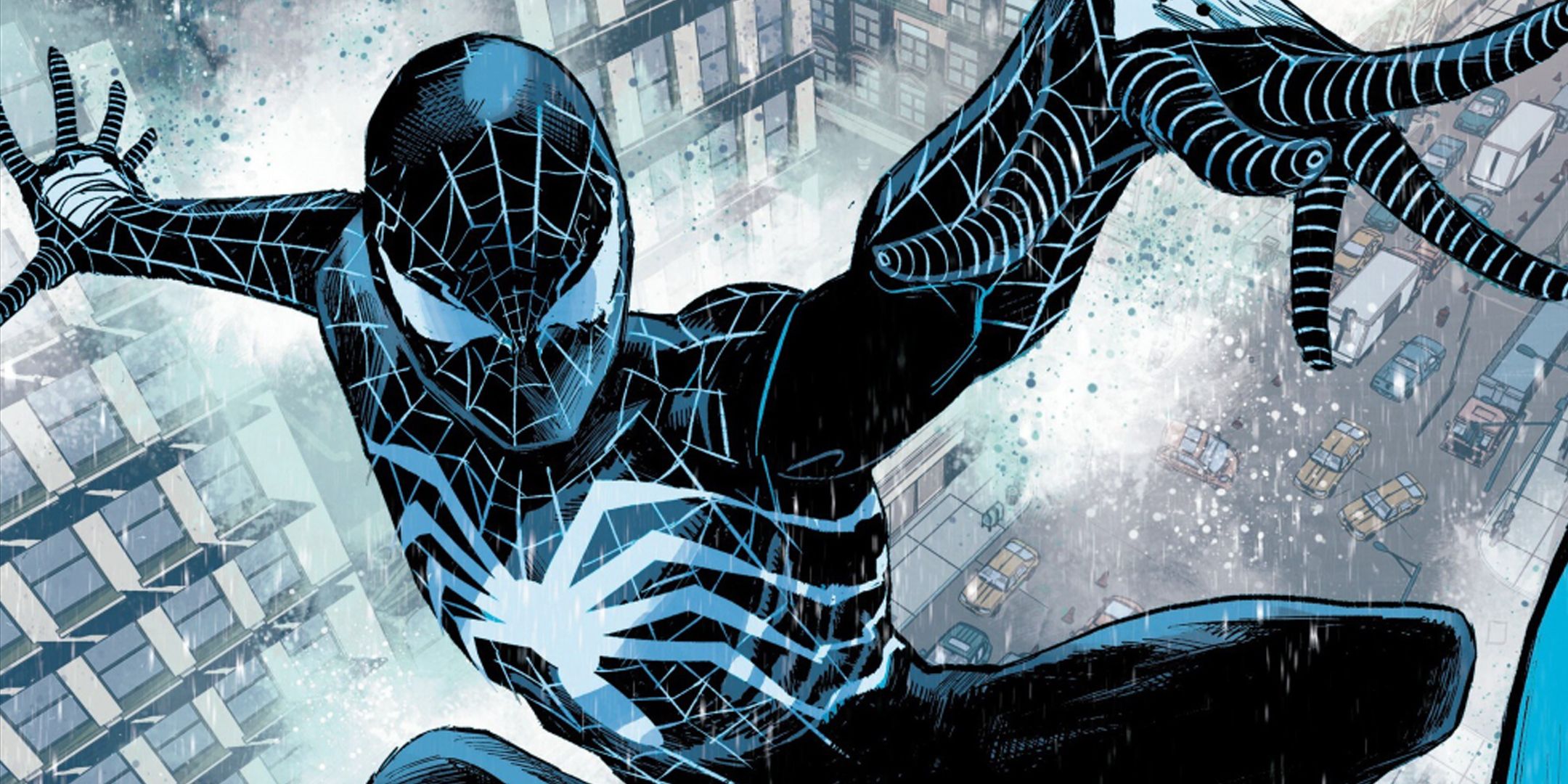Welcome back to another installment of Indie Comics Showcase, the weekly blog where we signal boost a few truly independent comics that are currently crowdfunding their projects, crowdsourcing their funding in some way, or just completely self-publishing on their own. Every little bit of support for these creators matters, from a single dollar pledge to the twenty-five dollar bundle, and of course the higher tiers are usually fun too! Even if you can’t back a campaign or buy a book, you can share or tweet about these projects to your friends and followers.
On Indie Comics Showcase, we interview the creators, show off some art, and tell you how you can check out the product for yourself. Below we have some outstanding crowdfunding campaigns this week for you to learn about, enjoy, and hopefully support by backing one or more of them! Thanks for checking these out and for being the best part of Indie Comics Showcase. Let’s jump in!

Check out the book here!
Chris Braly: For those unfamiliar, can you give us the elevator pitch for your comic? What is Gig Line: A Comic Book Autobiography about?
Bruce Olav Solheim: Gig Line: A Comic Book Autobiography is my life. The book offers readers 37 two-page comic stories in chronological order by many different artists from around the world. It is the story of a man’s struggle to seek alignment and balance in a complex world.

Bruce Olav Solheim: The term “gig line” comes from its military usage. Lining up your trouser fly, your belt buckle, and your shirt buttons establishes a straight gig line. If you do something wrong in the military (especially during an inspection), you get “gigged.” If you don’t have the proper gig line in your uniform, it doesn’t look neat, and you appear to be out of alignment. The military taught me discipline, to take pride in what I do, and to focus on the mission. I was also contemplating “plumb line” as a title. My dad was a carpenter and keeping everything plumb and using a plumb line were things I learned early on. Nobody wants a crooked house, right? We need to be balanced and in alignment, and that has been the struggle of my life, as depicted in these stories.

Chris Braly: What influenced this comic, and what led you to self-publish it?
Bruce Olav Solheim: I was inspired by Harvey Pekar and American Splendor. I am a disabled US Army veteran and wanted to tell my story. I also enjoy having full creative control.
Chris Braly: Who is the intended audience for Gig Line? What kind of readers will connect with it?
Bruce Olav Solheim: All ages. I combine humor, history, drama, social commentary, and sci-fi into my autobiographical stories.

Chris Braly: Can you describe your creative style and process? How did you develop your approach to this project?
Bruce Olav Solheim: These autobiographical stories are all two-pagers, which forced me to be concise in my storytelling and to focus intently on the imagery necessary to convey a meaningful lesson that I’ve learned in life. I’m a history teacher and have been for more than thirty-four years. It’s my main gig. Comics are my side gig, but I owe everything to the sequential arts because that is how I learned to read. I am a historian and have been making comics since I was a kid.

Chris Braly: Who is on creative team that helped bring Gig Line to life?
Bruce Olav Solheim: Myself, of course. I write and create for at least two hours each day. George Verongos is my executive editor, Julia Kazanowska was the art editor, and many artists from around the world. I selected each artist for specific stories because their style perfectly captures the ambience of the narrative. I appreciate how each artist captures me in their own unique way, reflecting my various moods, attitudes, and phases of life. After all, in real life, each person perceives us differently, right?

Chris Braly: What have you learned from the process of self-publishing and crowdfunding this book?
Bruce Olav Solheim: I control the content. Big publishers do not do much in terms of promotion anyway, so I don’t mind doing my own.
Chris Braly: What are your plans after this book? Do you have more stories to share?
Bruce Olav Solheim: Working on Dr. Jekyll Alien Hunter #2 and Snarc #3.

Chris Braly: Thanks for taking the time to share this with us, and I thank you for your service as well.
Bruce Olav Solheim: All of this is done in the spirit of cooperation and peace. I hope you agree and enjoy the results. Thank you.
Check out the book here!
_________

Check out the campaign here!
Chris Braly: Give us your elevator pitch—what is THE MANIAK about?
John Borelli: THE MANIAK #1 features THE MANIAK, who is hellbent on crashing a party so assassins will come after him. It’s a 25 page story. In THE MANIAK VS HARRY LIGGINS, the Maniak goes after a guy (totally not inspired by a real person) for getting his comic book campaign struck down. It’s 12 pages. Both stories are in black and white.

Chris Braly: Where did the idea for THE MANIAK come from, and what made you decide to self-publish?
John Borelli: I have had the idea to have a humorous superhero comic called THE MANIAK for years. Originally he looked more like a biker and had an M on his chest. He was the only hero going after Super Pimp because he didn’t care that it would look racist. It wasn’t until there was a lot of “Batman is evil, he should be like Bernie Sanders/Batman just beats up poor people” discourse online that I realized THE MANIAK should lean into that. Selfish, thrill-seeking, and cruel, but still the hero. I’m self-publishing because I think it would just get rejected being tasteless.

Chris Braly: Who is this comic best suited for? Who do you see as your audience?
John Borelli: If you like mean humor or great art this is for you.
Chris Braly: Can you describe your creative style and process? How did you develop your approach to making this comic?
John Borelli: I dream up cool scenes, think of jokes, and then string them together. I only storyboard some of the panels, Corgan does the heavy lifting in the art department.

Chris Braly: Who else helped bring this project to life?
John Borelli: Corgan is the main artist. RayRayIsHappy has done the cover for #1 and some promo images.
Chris Braly: What does your production workflow look like?
John Borelli: A few pages get done a month. From script to drawn pages. Issue 2 is already written.

Chris Braly: What have you learned from the process of self-publishing and crowdfunding so far?
John Borelli: Writing is the easiest the part lol.

Chris Braly: Any plans beyond this book? Are there more stories to come?
John Borelli: The first arc is planned for six issues, and I have some shorter MANIAK stories planned too.
Chris Braly: Good luck, John!
Check out the campaign here!
_________

Check out the campaign here!
Chris Braly: Start us off with your elevator pitch—what’s Kerguelen about?
Edgar Anderson: Kerguelen issue 1 is 30 pages long and is black and white. A wealthy merchant named Mr. Clay hires a group of mercenaries to track down a bandit gang that has been raiding his caravans. Some of the bandits are captured and are in possession of strange artifacts that they found near some ruins. The prisoners say that the ruins are haunted and should be avoided, but Mr. Clay forces them to lead him and his mercenaries to the ruins so that he can plunder it.

Chris Braly: What inspired the concept for Kerguelen, and why did you choose to self-publish?
Edgar Anderson: I like geography and I read about an oceanic plateau near Antarctica called the Kerguelen Plateau. The Kerguelen Plateau used to be a microcontinent but now most of it is underwater except for a few small islands. For my comic, I imagined what the Kerguelen Plateau would be like if it was not underwater anymore. The southern part is the coldest, so its geography is similar to the McMurdo Dry Valleys in Antarctica; the middle part is tundra similar to the Kerguelen Islands; and the northern part is a forest similar to Tierra del Fuego.
The comic has a post-apocalyptic setting inspired by Fallout and Mad Max, where people live in small, isolated settlements struggling to survive in the harsh environment. I decided to self-publish to retain full creative control over my work.

Chris Braly: Who is the target audience for Kerguelen?
Edgar Anderson: Kerguelen is a post-apocalyptic comic aimed at anyone who enjoys action and adventure.
Chris Braly: Can you describe your creative style and process? How did you develop this project?
Edgar Anderson: This was my first time publishing a comic. I got ideas for the setting and story from daydreaming, and I would occasionally jot down notes. These notes grew into a detailed design document with a fleshed-out world, characters, and story. I drew a map of the Kerguelen Plateau and eventually began writing scripts for the first issue.

Chris Braly: Who’s on your creative team, and how did they contribute?
Edgar Anderson: My team includes an illustrator and a creative editor, both hired through Upwork. The illustrator for Kerguelen issue 1 is Manuel Benigno, who lives in Italy and recently graduated from art school. My creative editor, William D. Hastings, helped with dialogue and plotting the scripts for issue 1 and several unpublished issues.

Chris Braly: Walk us through your production workflow. How far along are you with the series?
Edgar Anderson: For issue 1, I wrote each page’s script, reviewed it with my editor, then sent it to the illustrator for a sketch. After approving the sketch, he completed the page. Issue 1 is complete and available on my website, kerguelencomic.com. The script for issue 2 is finished, but it hasn’t been illustrated yet. I’m hoping readers will preorder issue 2 here to fund its production.
Chris Braly: What lessons have you learned from self-publishing and crowdfunding?
Edgar Anderson: I learned how to effectively describe scenes to my illustrator to align with my vision. Working with my editor and beta readers also improved my storytelling and writing skills.

Chris Braly: What’s next for Kerguelen? Are there more stories planned?
Edgar Anderson: I envision Kerguelen as a long-running series. I’ve written scripts for nine issues and outlined a story spanning at least 50 issues.
Chris Braly: Are there any special features or perks for readers?
Edgar Anderson: Yes! The crowdfunding page for issue 2 offers three perks: two bonus stories exploring key characters’ backstories and behind-the-scenes content about the comic’s creation. You can read a free sample of the first nine pages of issue 1 at kerguelencomic.com.
Chris Braly: Cool! Good luck, Edgar.
Check out the campaign here!
_________
That’s it for this installment. If you’re a creator ramping up your own campaign or have a comic available for purchase online and you want to be featured in our weekly column, click here so we can hopefully help you get more eyes on YOUR crowdfunding comic project. Until next time, support indie comics!




















 English (US) ·
English (US) ·